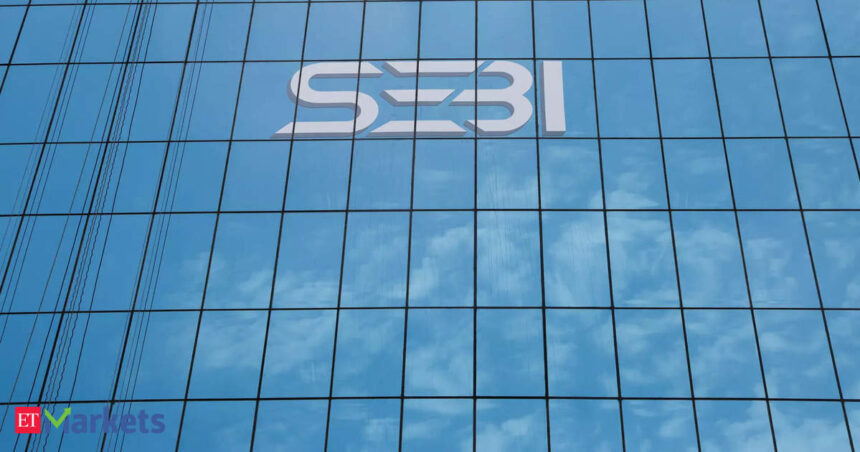The market regulator issued a consultation paper on Tuesday and sought public feedback on suggestions made by stock exchanges and merchant bankers.
The above move occurred due to many problems of SMEs which led to significant investor participation.
The applicant-to-allocated investor ratio increased from 4X in FY 2022 to 46X in FY23 and 245X in FY24, the Sebi paper said.
“It is observed that the participation of retail individuals has increased in SME IPOs over the past few years. Therefore, considering that SME IPOs tend to have a higher risk element and investors will be stuck if the sentiment changes post listing, to protect the interests of smaller retail investors, It is proposed to increase the size of the application from Rupees one lakh per application to Rupees two lakhs per application in the SME IPO, as a higher size will limit the participation of small investors and will attract investors with the risk of taking the appetite, which will increase overall. the credibility of the SME segment,” said the consultation paper when explaining the reasons for the move.
However, the above proposal does not require a change in the current allocation categorization in the SME IPO which mandates no less than 35% allocation to retail individual investors in book build issues and a minimum of 50% allocation to retail individual investors in fixed price issues, because in retail . individual investor category applications from an amount up to two lakhs are allowed. There is another proposal to increase the application size from Rs 1 lakh rupees per application to Rs 4 lakh rupees per application. The limit of Rs 1 lakh was imposed in the SEBI regulations more than 14 years ago and in the last 14 years, Nifty and Sensex have grown about 4.5 times, the consultation paper said, adding “Thus due to the same and considering the time, the alternative proposal would be appropriate for increase the threshold in the same ratio as the market has grown”.
If it increases by four times, there will be a requirement to change the allocation categorization in the SME IPO as the retail individual investor category will be redundant if the application size is increased to Rs 4 lakh rupees per application. “Since, the applicant will not be able to make an application in the retail category, it is proposed to combine the allocation for the retail category in the non-institutional category and remove the provisions related to the reservation for the retail individual investor category,” said the consultation paper.
The consultation paper also proposes alignment of allocations for non-institutional investors (NIIs) between main board IPOs and SME IPOs.
In the proposal, it is recommended that the withdrawal of lot allocation methodology and reservation in the portion available for NII in the main board IPO should be extended to the allocation for NII in the SME IPO. At present, the allocation procedure for the NII category in the book edition built for SME IPOs is based on proportional allocation and it is proposed to discontinue it.
Another proposal is to increase the minimum requirement of 50 allottees in public issues to 200. The above requirement will ensure that only companies with investor interest will get the list, the consultation paper said. This increased requirement will also ensure that the list of submissions also includes a large number of investors and will ensure liquidity in the market.
Stock exchanges and merchant bankers have also suggested that OFS in SME IPOs be fully limited or should be limited.
limited as a percentage of the problem size (20% – 25% of the problem size).
This is after Sebi found 2 pure OFS SME IPOs i.e. 100% OFS in FY 2023-24 and 1 in FY 2024-25 (up to Oct 2024).
There are a total of 52 issues in 2023-24 and 2024-25 where there is an OFS component along with new issues and in 30 of these 52 issues,
The OFS portion is more than 20% of the total problem size.
“It is observed that the promoter of the proposed IPO is diluting the shares that are not intended to form the SME Platform. Therefore, it is recommended to limit the OFS part of the SME IPO because the OFS results are not capital for the issuer and there may be limited to the OFS in terms of the issue size and also the threshold can be given to sell shareholders,” the newspaper said.
The paper also asks for opinions on the appointment of monitoring agencies, including mandatory ones, regardless of the size of the problem. A suggestion has been made to reduce the issue size threshold for which such appointment is required from Rs 100 crore to 50 crore / 30 crore / 25 crore / 20 crore.
Mukul Goya, Co-Founder of Stratefix Consulting welcomed the consulting paper as an important step to promote the growth and sustainability of small and medium enterprises in India. “The importance of a strong SME segment cannot be underestimated, as SMEs account for almost 45% of India’s industrial output and employ around 62 million people. It is in line with India’s ambition to improve the entrepreneurial landscape by increasing access to equity markets while maintaining investor interest,” he said.
The consultation paper highlights the need for better corporate governance standards and stricter oversight of related party transactions, which have become a problem in the SME sector, he added.
“SEBI’s proposal to raise corporate governance standards—such as the monthly financial disclosure mandate and stricter norms on Related Party Transactions—are steps in the right direction,” Goya said.




